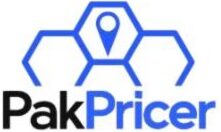- A Major Shift in Payment Access for Women
In July 2025 In July 2025, The Benazir Income Support Programme (BISP) introduced a major modification aimed at improving ways that beneficiaries, particularly women, get their money. Instead of having to endure long wait times at banks or government camps, or fixed branches, women can get their money at the local payment centers for retail transactions.
The change was made to make the process easy, speedier and more respectable. It has greatly made it easier to pay for families with limited incomes, providing the families with more options.
Understanding the Retail Payment Model
This model of retail payments is basic but effective method that allows beneficiaries to collect their BISP payments at local stores or through agents. The retail centers are typically small-scale businesses, such as supermarkets or points for utility bills that are certified by BISP to ensure that payments are delivered securely.
With the expansion of payment access to local businesses, BISP aims to provide greater options for customers especially in remote and rural regions, making the process more efficient and easier to access.
Key Changes Introduced in July 2025
- Additional Payment Points
From July 20, 2025 BISP payment options were made available in a variety of local stores particularly located in areas that are remote, which reduced the requirement for recipients to travel far distances. This resulted in less time waiting and traveling, which improved accessibility overall. - Biometric verification
In order to ensure safe transactions biometric fingerprint scanning was implemented. This prevents fraud and guarantees that payments are only made to proper recipients. - Printing Receipts
Users will now get printed receipts for their transactions and can keep a detailed record of their transactions and confirm the amount they received. - Improved Komfort as well as Safety
Prior to HTML0 people who needed to pay for services had endure lengthy waits outside and often in hot temperatures. The shift to indoor retail locations offers a cooler, more secure and more hospitable environment for women to receive their payment.
How the New Payment Process Works
This is a step-by-step instruction for those who are beneficiaries of the latest retailer payment method:
Step 1 Confirm Your eligibility
Before going to the retail store, customers must verify their eligibility through SMS or visiting the BISP Help Desk.
2. Find the nearest Retail Center
Check out the official list from BISP, or call your local office for the closest authorized retail store.
Step 3 Bring your CNIC
Be sure you have your original CNIC as photocopies will not be accepted.
Step 4 Step 4: Identification via Biometrics
In the center for retail the storekeeper can scan the thumbprint in order to confirm your identity.
5. Take your payment and receipt
When you have verified your identity you will be able to receive your money along with an official receipt. Make sure you check the amount to ensure it is correct.
Positive Impacts on Women Beneficiaries
The transition to retail payment centers has brought a number of key benefits for women.
- Simple access Users don’t have to go to remote districts or cities. Shopping centers are now located closer to where they live especially in rural areas.
- Higher independence The system of biometric authentication guarantees that only the person who is receiving the money is able to collect it, which reduces dependance on male cousins.
- More Respect Women can now make payments in cleaner, safer and usually indoor places which means they can avoid lengthy waits in queues.
- Flexible hours Retail establishments generally have longer hours of operation in comparison to traditional banks or government camps, which makes it easy for women to take payment at the time that suits them.
Common Challenges Encountered in July
Despite the overall success with the system certain challenges have been noted:
- BIOMETRIC DRIVE ERRROR Sometimes the biometric scanners did not manage to recognize thumbprints in a correct manner.
- Low awareness A few customers were not aware of the new system for payment and continued to use old-fashioned centers.
- Retailers who aren’t trained Shopkeepers had difficulty paying or had technical issues.
- Non-authorized fees Women have reported illegal deductions or charges made by shopkeepers, triggering inquiries by BISP.
What BISP Is Doing to Improve the System
To meet the challenges, BISP is taking the following steps:
- Staff trained to inspect the retail outlets
- Removal of agents that are not authorized to offer illegally charged fees
- Offering more education for shopkeepers
- Increased awareness via Local visits and SMS
- Enhancing complaint reporting systems by assistance lines as well as local BISP offices
Essential Tips for Beneficiaries
To make sure that they have a pleasant experience at the malls the beneficiaries must follow these guidelines:
- Always bring your original CNIC
- Cleanse your thumb prior to scanning
- Never divulge your personal information or PIN with anyone.
- Pay no additional charges–BISP payments are completely cost-free
- Always ask for and save your receipt in its original form.
- Any suspicious activity should be reported immediately
Frequently Asked Questions (FAQs)
Can anyone else take my BISP account?
No it can only be taken by the beneficiary with his individual CNIC and thumbprint for security.
What happens if my thumbprint isn’t being recognized?
Clean your thumb and try again. If the problem persists go to the nearest BISP office to correct your fingerprint information.
Are all shops licensed?
No only registered retail stores can accept payments. Always verify before entering the shop.
Do I have to pay to collect my money?
No Payments made through BISP are completely free. Be sure to report any shopkeeper who asks for fees.
What happens if a store is unable to pay?
If this occurs, you have the option to either wait, or visit another authorized location or come back to the store later. The frequent shortages must be reported to BISP.







